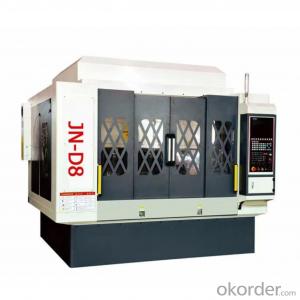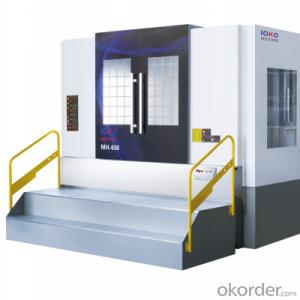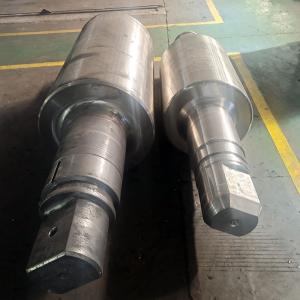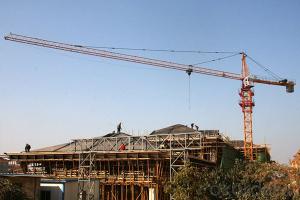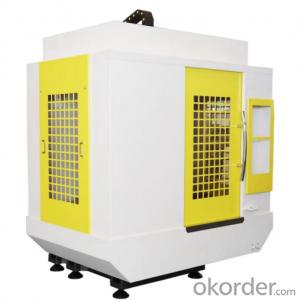Concrete Pump Elbow Pipeline
- Loading Port:
- China Main Port
- Payment Terms:
- TT OR LC
- Min Order Qty:
- -
- Supply Capability:
- -
OKorder Service Pledge
Quality Product, Order Online Tracking, Timely Delivery
OKorder Financial Service
Credit Rating, Credit Services, Credit Purchasing
You Might Also Like
Elbow DN125*R275*90
Elbow DN125*R275*45
Elbow DN125*R275*30
Elbow DN125*R275*25
Elbow DN125*R275*15
Elbow DN125*R500*90
Elbow DN125*R500*45
Elbow DN125*R500*30
Elbow DN150*R500*90
Elbow DN125*R1000*90
Elbow DN125*R1000*90, Schwing ends
Elbow DN125*R350*90, T:4.5mm
Other sizes, please contact with us!!!
- Q:What are the indications of a faulty concrete pump seal?
- There are several indications that can suggest a faulty concrete pump seal. Some of the common signs include: 1. Leakage: One of the most obvious signs of a faulty seal is leakage. If you notice any leaks around the seal area, it is a clear indication that the seal is not working properly and needs to be replaced. 2. Reduced pumping efficiency: A faulty seal can lead to reduced pumping efficiency. If you notice that the concrete pump is not able to deliver the same amount of concrete as it used to, or if it takes longer to complete a job, it could be due to a faulty seal. 3. Increased noise levels: Another indication of a faulty seal is an increase in noise levels during operation. If you notice any unusual or louder noises coming from the concrete pump, it could be a sign that the seal is not sealing properly and needs to be checked. 4. Vibration or movement: Faulty seals can also lead to excessive vibration or movement in the pump. If you notice that the pump is vibrating more than usual or if it is moving around during operation, it could indicate a problem with the seal. 5. Contamination: A faulty seal can allow contaminants such as dirt, dust, or water to enter the pump. If you notice any signs of contamination in the pump, it is important to inspect the seal and replace it if necessary. It is important to address any indications of a faulty concrete pump seal promptly to avoid further damage to the pump and ensure safe and efficient operation. Regular maintenance and inspection of the seal can help prevent potential issues and extend the life of the concrete pump.
- Q:How often should concrete pump accumulators be inspected and replaced?
- To ensure proper functioning and prevent potential issues, it is important to regularly inspect concrete pump accumulators. The frequency of inspections will depend on factors such as manufacturer recommendations, usage intensity, and operating conditions. As a general rule, it is recommended to inspect the accumulators at least every six months or after every 500 hours of operation, whichever comes first. However, if the pump is used more frequently or operates under harsh conditions, more frequent inspections may be necessary. During the inspection, check the accumulators for visible signs of wear or damage, such as leaks, cracks, or corrosion. Additionally, test the pressure levels and performance to ensure they meet the required standards. When it is time for replacement, it is best to follow the manufacturer's recommendations. Typically, accumulators have a lifespan of around 3 to 5 years, but this can vary based on maintenance, usage, and environmental conditions. If any significant issues are found during the inspection or if the accumulators have reached their recommended lifespan, it is advisable to promptly replace them to avoid potential failures and ensure the safety and efficiency of the concrete pump.
- Q:How often should I replace concrete pump spare parts?
- The frequency of replacing concrete pump spare parts depends on several factors such as the quality of the parts, the intensity of usage, and the maintenance practices. However, as a general guideline, it is recommended to inspect and replace worn or damaged concrete pump spare parts on a regular basis, typically every 6 to 12 months, to ensure optimal performance and avoid potential breakdowns or safety hazards.
- Q:What are the signs of wear and tear in concrete pump spare parts?
- Concrete pump spare parts may exhibit signs of wear and tear, which should not be overlooked. Some indicators include: 1. Surface damage: Cracks, dents, or scratches on pipes and hoses can signify wear and tear, particularly if they are extensive or deep. 2. Corrosion: Metal components like couplings or clamps may display signs of corrosion such as rusting or pitting, which can weaken the part and affect its functionality. 3. Leaks: Notable leaks in seals or gaskets can suggest wear and tear. Material degradation or improper installation can cause leaks, impacting the pump's efficiency and performance. 4. Decreased performance: Wear and tear in concrete pump spare parts can result in reduced overall performance. For instance, worn-out wear plates can diminish pumping capacity or increase energy consumption. 5. Heightened noise or vibrations: If noise levels or vibrations intensify while operating the concrete pump, it may indicate wear and tear in the spare parts. Imbalances, misalignments, or loose components can negatively affect the pump's performance and lifespan. 6. Excessive wear on moving parts: Moving parts like pistons or cylinders may exhibit excessive wear and tear, such as scoring or grooving on the surface. This can impede the smooth operation of the pump and potentially cause further damage if left unaddressed. Regular inspection and maintenance of concrete pump spare parts are vital to promptly identify and address any signs of wear and tear. Timely replacement or repair of worn-out components can prevent further damage, ensuring the concrete pump operates efficiently and safely.
- Q:Can I get spare parts for concrete pumps with different types of valve systems, such as S-valve or gate valve?
- Indeed, procuring spare parts for concrete pumps equipped with various valve systems, such as S-valve or gate valve, is entirely feasible. Manufacturers and suppliers of concrete pumps generally offer an extensive selection of spare parts, which encompass valves. These spare parts can be procured either directly from the manufacturer or via authorized distributors. To ensure compatibility, it is vital to furnish precise information regarding the concrete pump model, valve type, and any other pertinent details when placing an order for spare parts. Moreover, there exist specialized firms that exclusively concentrate on providing spare parts for concrete pumps, irrespective of the valve system employed. These entities often possess a comprehensive inventory of spare parts and can offer assistance in identifying and sourcing the necessary components for your specific concrete pump.
- Q:What are the different types of concrete pump rubber pistons?
- There are several different types of concrete pump rubber pistons available in the market, each designed for specific applications and requirements. Some of the commonly used types include: 1. Single-Action Piston: This type of piston is designed to push the concrete forward during the pumping process. It moves in a single direction, providing a consistent and efficient flow of concrete. 2. Double-Action Piston: Unlike the single-action piston, the double-action piston can move in both directions. This allows for a more versatile pumping process and can be useful in situations where there are obstacles or restrictions in the pump line. 3. Steel Reinforced Piston: These pistons are reinforced with steel to provide additional strength and durability. They are commonly used in high-pressure pumping applications or when pumping abrasive materials. 4. Polyurethane Piston: Polyurethane pistons are known for their excellent wear resistance and longevity. They are often used in demanding pumping conditions where durability is crucial. 5. Rubber Sponge Piston: Rubber sponge pistons are designed to have a soft and flexible surface, allowing them to conform to irregularities in the pump line. They are particularly useful in situations where there may be bends or corners in the line. 6. Bonded Piston: Bonded pistons are made by bonding a rubber or polyurethane material to a metal core. This combination provides both the flexibility of rubber and the strength of metal, making them suitable for various pumping applications. It is important to choose the right type of concrete pump rubber piston based on the specific requirements of the project. Factors such as pumping pressure, material being pumped, and environmental conditions should be considered to ensure optimal performance and longevity of the piston.
- Q:How can one identify the correct type of rubber seals or gaskets for concrete pump spare parts?
- To identify the correct type of rubber seals or gaskets for concrete pump spare parts, there are a few steps you can follow: 1. Consult the manufacturer's documentation: Check the concrete pump's manual or any accompanying documentation provided by the manufacturer. This information will usually specify the type and size of rubber seals or gaskets required for different parts of the pump. 2. Measure the dimensions: Take precise measurements of the seals or gaskets that need replacement. This includes the inner diameter, outer diameter, and thickness. These measurements will help you find the right size of seals or gaskets. 3. Material compatibility: Consider the material compatibility between the rubber seals or gaskets and the concrete being pumped. Concrete may contain chemicals or additives that can degrade certain types of rubber. Ensure that the seals or gaskets you choose are made of a material that is resistant to the specific chemicals present in the concrete. 4. Seek expert advice: If you are unsure about the specific type of rubber seal or gasket required for your concrete pump, it is always advisable to seek expert advice. Contact the manufacturer directly or consult a reputable supplier or distributor who specializes in concrete pump spare parts. They can provide guidance and recommend the correct type of seals or gaskets based on your specific pump model and requirements. Remember, using the correct type of rubber seals or gaskets is crucial for maintaining the efficiency and safety of your concrete pump. Taking the time to identify the right parts will help ensure optimal performance and minimize the risk of premature wear or failure.
- Q:How often should concrete pump cylinders be inspected and replaced?
- Concrete pump cylinders should be inspected regularly, ideally on a daily basis, to ensure they are in proper working condition. The frequency of replacement depends on several factors including the intensity of usage, maintenance practices, and the quality of the concrete being pumped. Generally, concrete pump cylinders should be replaced when they show signs of significant wear and tear or when they no longer meet the required performance standards.
- Q:How can one ensure compatibility between concrete pump spare parts and the pump?
- Ensuring compatibility between concrete pump spare parts and the pump is crucial to maintain the efficiency and performance of the equipment. Here are a few steps to ensure compatibility: 1. Identify the correct model and manufacturer: Gather all the necessary information about the concrete pump, including the model number and manufacturer. This information will help you find the right spare parts that are specifically designed for that particular pump model. 2. Use genuine spare parts: It is always recommended to use genuine spare parts provided by the pump manufacturer or authorized distributors. Genuine parts are specifically designed and tested to meet the pump's specifications, ensuring a perfect fit and compatibility. 3. Check part numbers and specifications: Before purchasing any spare parts, carefully cross-check the part numbers and specifications with the original parts. This will help ensure that the new parts are compatible with the pump. 4. Consult with experts: If you are unsure about the compatibility of certain spare parts, consult with experts or the manufacturer's technical support team. They can provide guidance and advice based on their expertise and experience. 5. Conduct regular maintenance and inspections: Regularly inspect and maintain the concrete pump to identify any wear or damage to the parts. This will help you identify the specific spare parts that need replacement and ensure compatibility with the pump. 6. Prioritize quality and reliability: While cost may be a factor, it is important to prioritize quality and reliability when choosing spare parts. Investing in high-quality parts will ensure better performance, durability, and compatibility with the pump. By following these steps, you can ensure compatibility between concrete pump spare parts and the pump, thereby maximizing its lifespan, performance, and overall efficiency.
- Q:How do I maintain the performance of concrete pump spare parts in extreme weather conditions?
- To ensure the efficiency and longevity of your equipment, it is crucial to maintain the performance of concrete pump spare parts in extreme weather conditions. Consider the following tips: 1. Conduct regular inspections to detect signs of wear and tear early on. Extreme weather can accelerate part deterioration, so staying vigilant is important. 2. Keep spare parts clean to prevent clogging or damage caused by dirt, debris, or contaminants that may accumulate in extreme weather conditions. 3. Use appropriate lubrication for smooth functioning. Opt for lubricants designed for extreme weather, with high viscosity and resistance to temperature fluctuations. 4. Protect spare parts from direct exposure to extreme heat or freezing temperatures by using covers or enclosures. 5. Store spare parts in a dry, temperature-controlled environment when not in use. Extreme weather can cause expansion or contraction, potentially leading to damage. Controlled storage helps maintain integrity and performance. 6. Monitor and replace worn-out parts in a timely manner to maintain performance. Extreme weather conditions can accelerate wear and tear, so proactive replacement is crucial. 7. Consult the manufacturer for specific requirements on maintaining spare parts in extreme weather. They can offer expert advice and guidance for optimal performance. By following these tips, you can effectively preserve the performance of concrete pump spare parts in extreme weather conditions, ensuring smooth and efficient equipment operation.
1. Manufacturer Overview |
|
|---|---|
| Location | |
| Year Established | |
| Annual Output Value | |
| Main Markets | |
| Company Certifications | |
2. Manufacturer Certificates |
|
|---|---|
| a) Certification Name | |
| Range | |
| Reference | |
| Validity Period | |
3. Manufacturer Capability |
|
|---|---|
| a)Trade Capacity | |
| Nearest Port | |
| Export Percentage | |
| No.of Employees in Trade Department | |
| Language Spoken: | |
| b)Factory Information | |
| Factory Size: | |
| No. of Production Lines | |
| Contract Manufacturing | |
| Product Price Range | |
Send your message to us
Concrete Pump Elbow Pipeline
- Loading Port:
- China Main Port
- Payment Terms:
- TT OR LC
- Min Order Qty:
- -
- Supply Capability:
- -
OKorder Service Pledge
Quality Product, Order Online Tracking, Timely Delivery
OKorder Financial Service
Credit Rating, Credit Services, Credit Purchasing
Similar products
New products
Hot products
Related keywords




















